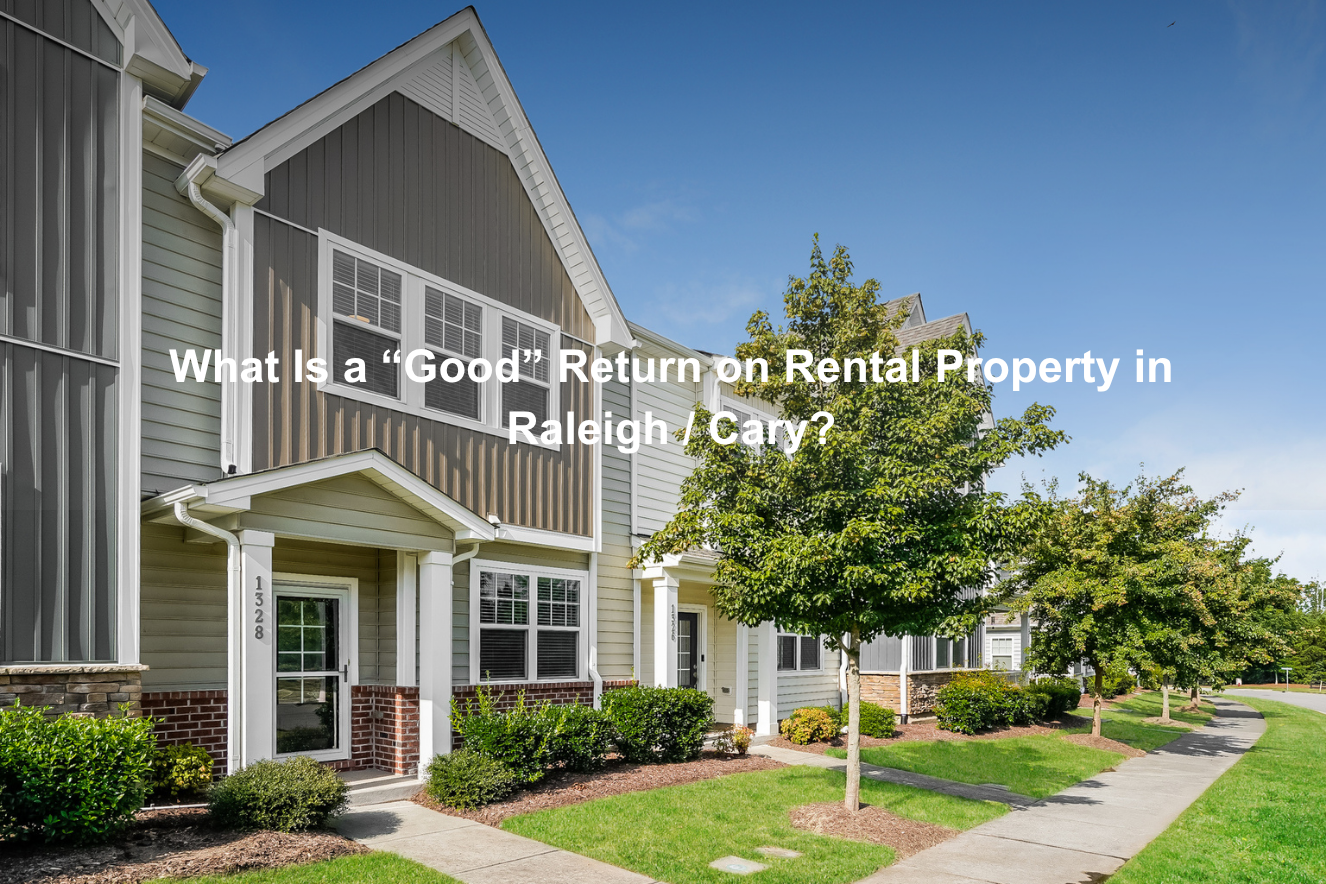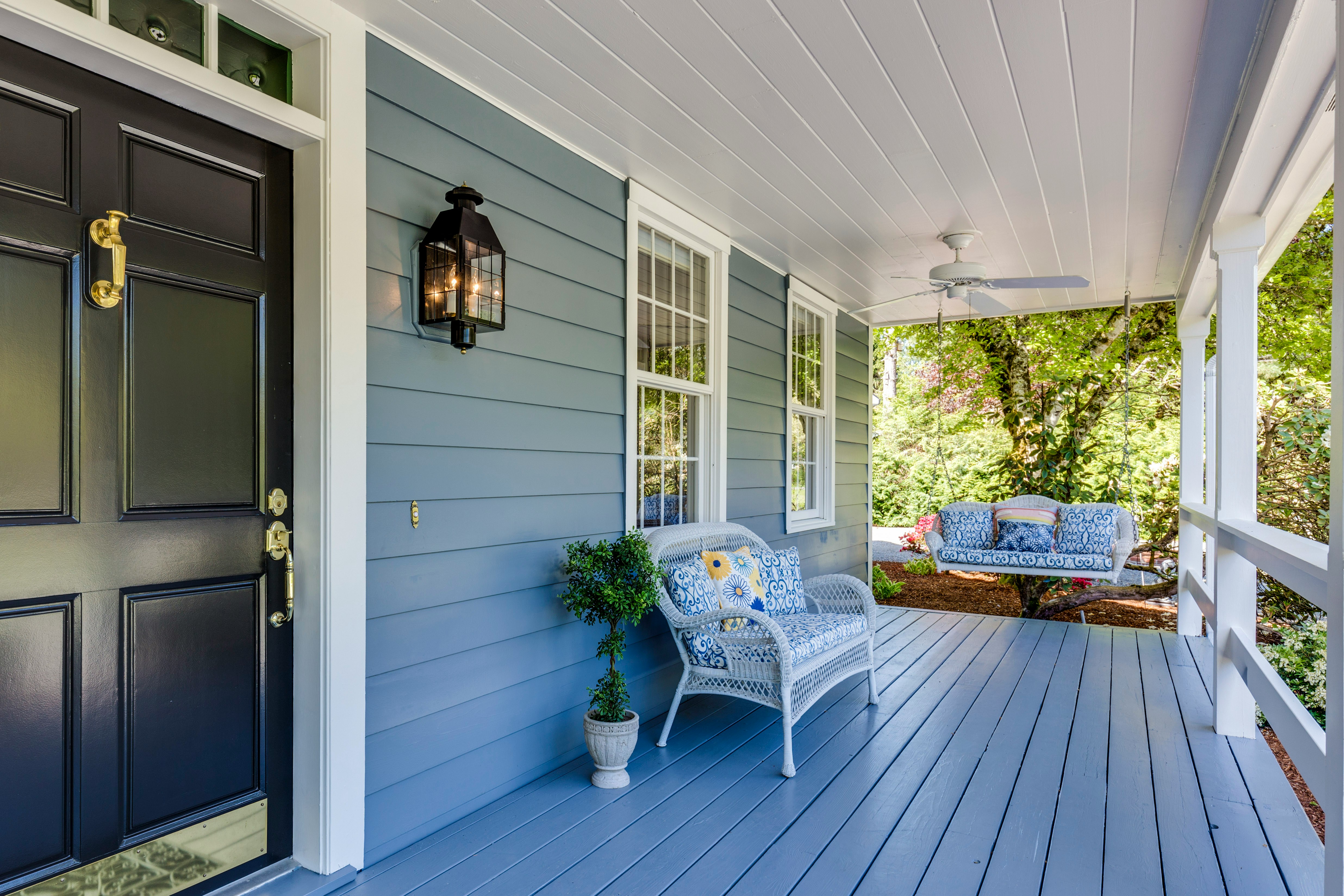Why ROI Benchmarks Matter in Raleigh, Cary and the Triangle
Every investor wants to know the same thing: “What’s a good return on a rental property in Raleigh or Cary?” It’s a smart question. National averages are a starting point, but the Triangle’s market dynamics—rising values, steady job growth, and strong rental demand—shift what “good” looks like here.
Maximizing Rental Property ROI in Cary, NC: Expert Property Management Tips — https://www.masterkeypm.com/blog/how-to-maximize-investment-property-roi
At a Glance: What You’ll Learn
The three ways single-family investors measure returns (cap rate, cash-on-cash, gross yield)
Raleigh/Cary baseline ranges grounded in current public data
Side-by-side examples showing how returns compare
How appreciation adds to total return (cash flow + equity growth)
Factors that move returns up or down—and how to improve them
Key ROI Metrics: What to Use (and Why)
Cap Rate (Capitalization Rate)
Cap Rate = Net Operating Income ÷ Property Value
Cap rate is the most common way investors compare properties. It accounts for income after expenses (taxes, insurance, repairs, vacancy, management, etc.), so it gives a truer picture than gross yield.
MasterKey Pro Tip: Use cap rate to compare properties of similar type in the same market. Don’t compare Raleigh SFHs to Midwest duplexes — the benchmarks differ.
Cash-on-Cash Return
Cash-on-Cash = Annual Cash Flow ÷ Initial Cash Invested
This shows how hard your cash is working. It factors in financing, so it’s especially helpful if you’re using a mortgage.
MasterKey Pro Tip: Cash-on-cash return helps you measure the impact of loan terms. A property with modest cap rate might still deliver strong CoC if financing is favorable.
What Does “Screening Only” Mean?
Gross Yield = Annual Rent ÷ Property Value
(Screening Only)
Gross yield is a quick way to compare properties at a glance. But it’s called “screening only” because it doesn’t subtract expenses like taxes, insurance, maintenance, HOA dues, or property management. It’s just a starting point to see if a property is worth digging deeper into — not the true return.
MasterKey Pro Tip: Use gross yield to filter deals quickly, then rely on cap rate and cash-on-cash return for the real picture.
National Benchmarks vs. Local Reality
Nationally, many investors target 6–8% cap rates as “good.” In Raleigh and Cary, purchase prices and appreciation potential mean single family home (SFH) returns can look slimmer on paper. What matters here is total return—steady cash flow plus reliable appreciation.
The Raleigh Rental Property Playbook for Investors — https://www.masterkeypm.com/investor-guide
Raleigh / Cary SFH Benchmarks (with current data)
Raleigh: Average rent ≈ $1,644; average home value ≈ $440,731 → ~4.5% gross yield.
Cary: Average rent ≈ $2,195; average home value ≈ $623,198 → ~4.2% gross yield.
After typical SFH expenses (taxes, insurance, maintenance, vacancy, HOA, management), investors commonly see ~4.5–6.0% cap rates and ~6–8% cash-on-cash with sensible financing. Listings-focused tools also show Raleigh SFH cap rates in the ~4–6% range.
Example Calculation: Cary SFH
Purchase price: ~ $623,000
Rent: ~ $2,195/mo = $26,340/yr
Gross Yield: 26,340 ÷ 623,198 ≈ 4.2%
After Expenses: With 25–35% expense assumptions, a Cary SFH often pencils to ~4.5–5.5% cap rate.
MasterKey Pro Tip:
Always account for HOA dues. In Cary especially, newer communities often carry fees that reduce NOI.
Is it Worth the Money to Update a Rental Property? — https://www.masterkeypm.com/blog/is-it-worth-the-money-to-update-a-rental-property
Raleigh vs. Cary ROI Snapshot
| Market | Avg Home Value | Avg Rent | Gross Yield | Typical Cap Rate (25–35% expenses) | Appreciation (YoY) | Notes |
|---|---|---|---|---|---|---|
| Raleigh | ~$440,731 | ~$1,644/mo ($19,728/yr) | ~4.5% | ~3.0–3.5% | ~6.2% | Lower entry cost, diverse tenant base, strong demand |
| Cary | ~$623,198 | ~$2,195/mo ($26,340/yr) | ~4.2% | ~2.7–3.2% | ~8.1% | Higher cost compresses yield; appreciation & stability offset |
ROI Sensitivity Example (Cary averages)
| Expense % of Rent | NOI (Annual) | Cap Rate |
|---|---|---|
| 25% | $19,755 | ~3.2% |
| 30% | $18,438 | ~3.0% |
| 35% | $17,121 | ~2.7% |
| +5% rent increase scenario (to ~$2,305/mo): NOI ≈ $19,362 at 30% expenses → Cap Rate ~3.1% | ||
MasterKey Pro Tip:
A $100 rent increase adds $1,200 annually—often the difference between an average and a solid return. Focus on steady, controllable improvements.
Appreciation & Long-Term Wealth
Investors accept tighter cap rates in Raleigh and Cary because appreciation supercharges total return. Example: a Cary SFH bought at $623K appreciating 7% in a year adds ~$43,600 in equity. Combine that with $15–18K of NOI and total return can exceed 10%.
Learn more: Unlock Long-Term Tenants: Reducing Turnover in Raleigh & The Triangle — https://www.masterkeypm.com/blog/unlock_long_term_tenants
Factors That Influence ROI in Raleigh & Cary
Neighborhood & Location: Proximity to RTP, universities, hospitals; school district strength.
Property Type & Age: Newer builds = lower maintenance, higher price; older = more repairs, potential value-add.
Financing Terms: Rate and down payment directly affect cash-on-cash.
Tenant Demand & Turnover: Cary families often stay longer; student-heavy areas can turn faster.
Tips for Improving ROI in Raleigh & Cary
Buy Strategically: Target strong rent-to-price neighborhoods, not just the newest developments.
Upgrade Smartly: LVP flooring, energy-efficient appliances, fresh neutral paint, simple landscaping.
Reduce Vacancy: Market 30–45 days before lease end, price competitively, respond quickly to showings/apps.
Leverage Professional Management: Partnering with MasterKey keeps expenses predictable and turnover low.
Pitfalls That Drag Down Returns
Underestimating Expenses: Taxes, insurance, HOA, vacancy can consume 25–35% of rent.
Overleveraging: High debt service can erase cash flow.
Overpaying for Appreciation: Don’t assume rising values will fix weak cash flow.
Weak Tenant Screening: Leads to missed rent, damage, and turnover.
What This All Means in Plain English
You may not see “super high” cash flow like cheaper markets.
You do get steady rent, reliable tenants, and strong long-term appreciation.
If your property covers expenses, creates some monthly profit, and builds equity, you’re on track for a “good return.”
- Raleigh often delivers better monthly cash flow; Cary often delivers stronger appreciation and stability.
MasterKey Pro Tip:
Don’t chase a perfect percentage. Focus on covering expenses, generating profit, and building long-term equity—that’s how wealth is created in real estate.
Conclusion
Raleigh and Cary, a “good” return on a single-family rental is typically:
- Cap Rate: 4.5%–6.0%
- Cash-on-Cash: 6%–8%+ (depending on financing and expenses)
- Gross Yield: 4%–7% (screening metric)
Get a Free Rental ROI Review
Curious if your Raleigh or Cary rental is performing at market benchmarks? We’ll run the numbers and show you practical ways to improve returns.
Call: 919.655.3950
Frequently Asked Questions (FAQ)
Is 5% a good return on a rental property in Raleigh?
Why are Cary returns lower than Raleigh?
How do I calculate ROI on my property?
What matters more—cash flow or appreciation?



.JPG)